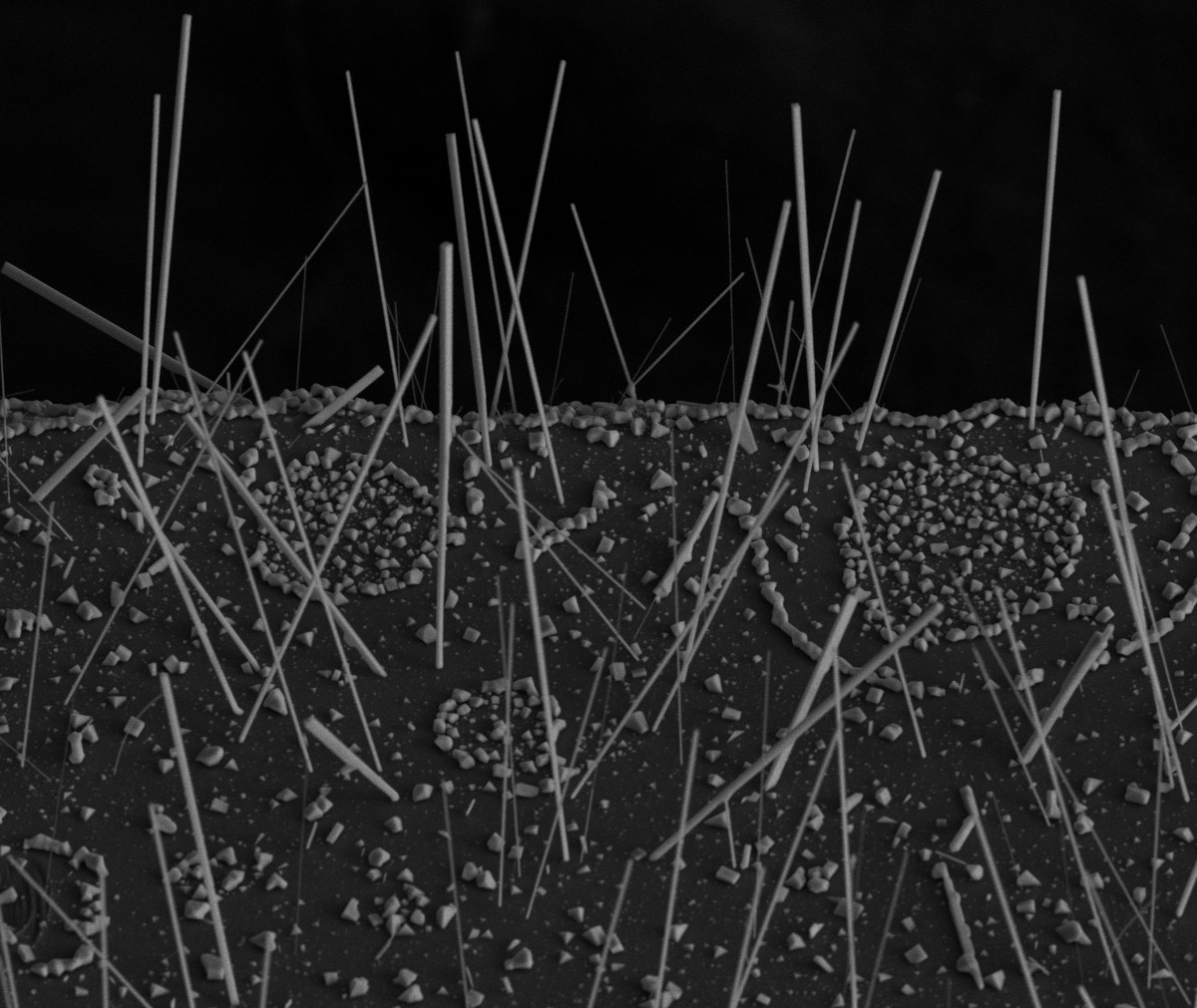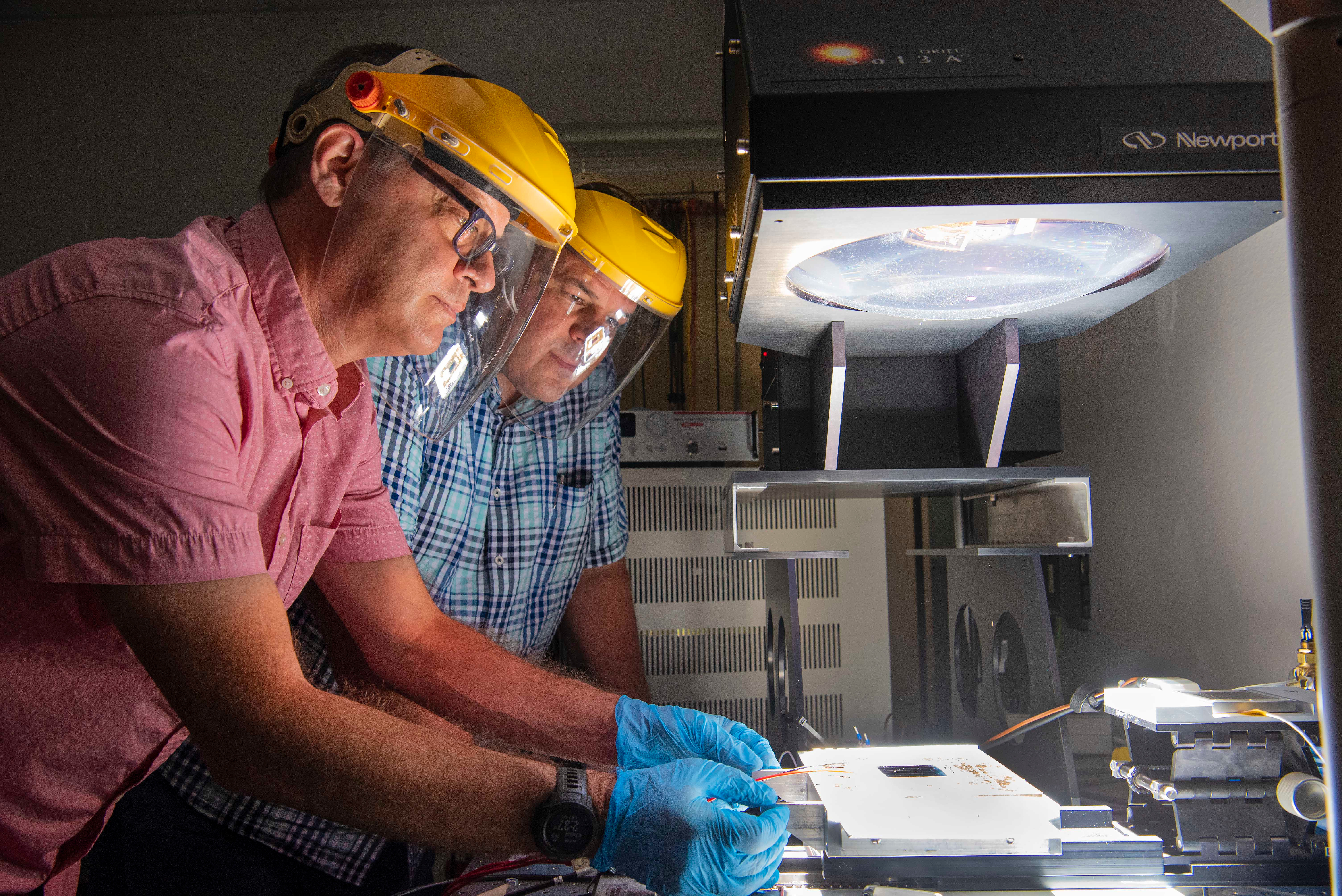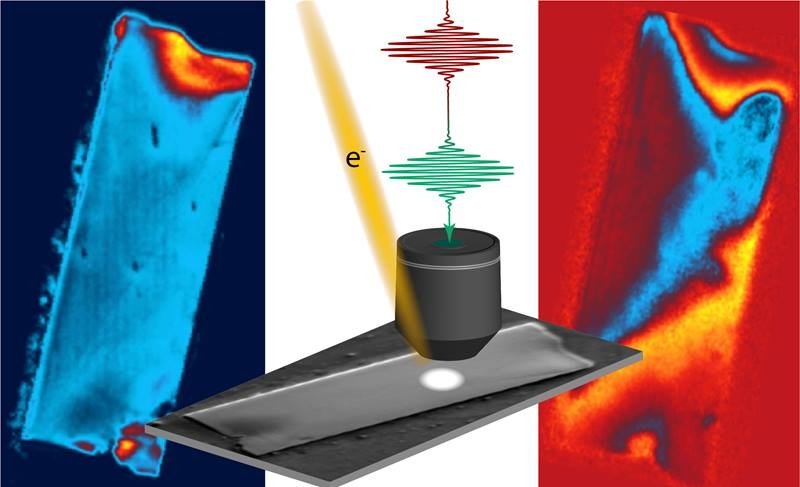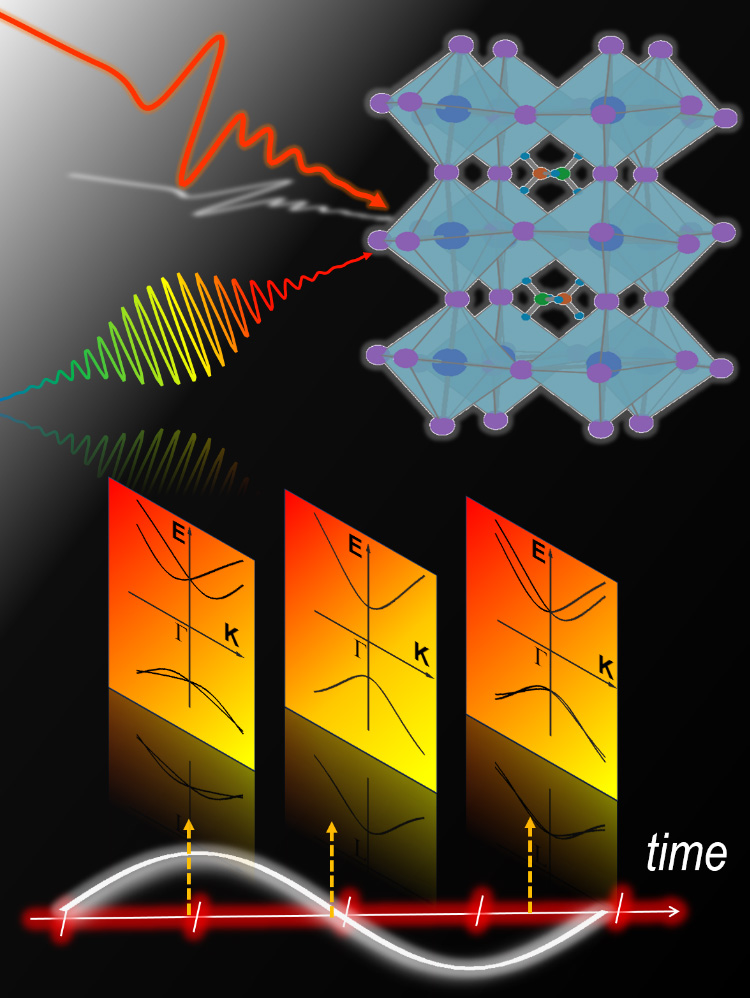Scientists from the National University of Singapore (NUS) have developed a novel triple-junction perovskite/Si tandem solar cell that can achieve a certified world-record power conversion efficiency of 27.1 per cent across a solar energy absorption area of 1 sq cm, representing the best-performing triple-junction perovskite/Si tandem solar cell thus far. To achieve this, the team engineered a new cyanate-integrated perovskite solar cell that is stable and energy efficient.
Tag: perovskite solar cells

Scientists Grow Lead-Free Solar Material With a Built-In Switch
A lead-free solar material developed by Berkeley Lab scientists offers a simpler and more sustainable approach to solar cell manufacturing. The advance could also benefit halide perovskites, a promising solar technology that requires much less energy to manufacture than silicon.
Chula’s Own Solar Cell Project High-powered and Diverse Formats that Meet World Standards
Chula’s researchers have garnered themselves a world-class reward for their latest solar cell project which increases the capacity of electricity production and can be applied to numerous types of merchandise. These new solar cells are guaranteed to meet international standards and develop clean energy for society.

Sandia-led center to advance understanding of new solar panel technology
The Department of Energy recently awarded $14 million to form a Sandia National Laboratories-led center to improve the understanding of perovskite-based photovoltaic technologies and determine the best tests to evaluate the new solar panels’ lifetimes.

Defects Slow the Electron’s Dance
Researchers used two advanced microscopy techniques to learn how crystal defects affect the performance of crystalline solar cells called lead halide perovskite cells. The research used two microscopy techniques: electron backscattering diffraction to view crystal quality at scales of 100 nanometers and ultrafast microscopy to examine how electrons move. The research shows that microscopic defects that form when the crystals are made can reduce how fast electrons move by a factor of almost 10.

Finding the beat: New discovery settles a long-standing debate about photovoltaic materials
Scientists have theorized that organometallic halide perovskites— a class of light harvesting “wonder” materials for applications in solar cells and quantum electronics— are so promising due to an unseen yet highly controversial mechanism called the Rashba effect. Scientists at the U.S. Department of Energy’s Ames Laboratory have now experimentally proven the existence of the effect.